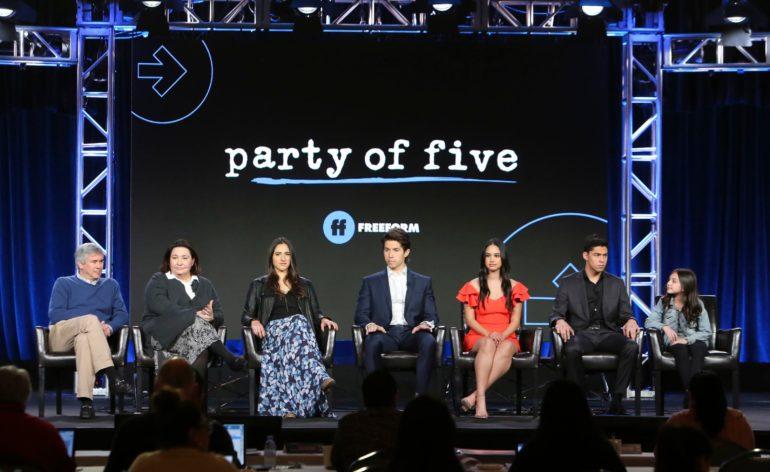‘Party of Five’ Bosses on Importance of Educating Audience on Citizenship Process
By Danielle Turchiano
LOS ANGELES (Variety.com) – Freeform picked up a reboot of “Party of Five” from original show creators Amy Lippman and Chris Keyser, as well as writer and co-executive producer Michal Zebede, but the project is not just going to “capitalize on reboot culture,” Lippman said Tuesday.
While Lippman and Keyser had talked about returning to the concept of the show, which sees a family of five children learning to parent each other after the loss of their parents, for years, Lippman says they waited for a “reason to do it” and that reason became the world around them.
The original version of “” saw the Salinger family have to parent themselves and each other after the death of their parents, but with the new series, the Acosta kids are thrust into early adulthood when their parents get deported.
“As we began to see the political climate and stories like this on the front page of every newspaper, we began to realize that what we imagined as a family of orphan 25 years ago had transmogrified into a family of kids living without their parents,” Lippman said at the Television Critics Assn. press tour panel for the series.
The pilot episode of the new “Party of Five” includes scenes reminiscent of news headlines, including a baby being literally ripped out of its parents’ arms and kids on one side of cage-style fencing while parents are on the other side. Lippman said that the fact that this is “real, it’s happening every day” offers an advantage in the storytelling.
So, too, does she feel the fact that the parents are a factor in the story will aid in the new show’s attraction.
“They are not present, but they are dealing with how do we try to parent our kids from a distance, how do the kids deal in with social services, how is their footprint in the community different?” she said.
Keyser added that with the parents still alive but not around, the show will be able to deal with grief in a “slightly different way” than the original because “what is lost is not lost forever.”
“The world they faced is much different from the world the Salingers faced,” Keyser said.
The culture of the family is also different, and in order to accurately portray the immigrant experience, Zebede shared, they talked to both “people in this country whether illegally or DACA and learned about what that experience is like” as well as attorneys for those here illegally or DACA. The oldest child, played by Brandon Larracuente, is a DACA recipient and will spend time in the series concerned about his own status.
“We don’t want to go in with a strong political agenda, we just want to tell what [it] is like for these families,” Lippman said, though noting that one character will become more political while another will shy away from the politics after feeling what it is to be from a family with illegal immigrant parents.
But in order to satisfy the audience of the show who does remember the original fondly, some tentpole characteristics will be transferred, such as the fact that they “took the oldest brother and made him the least responsible, took the middle brother and made him the most maternal and took the youngest and made her the smartest, and we did it very deliberately many years ago and it helped,” Lippman said. Additionally, she noted, there is a scene in the pilot episode that was in the original pilot 25 years ago. “There is enough [in the show] for our fans from long ago to see echoes in it,” she said.
And Lippman shared that when they showed the pilot to a test audience, people asked why the father didn’t pursue citizenship when he first came to the country illegally.
“There is no path to citizenship when you are illegal,” Lippman said. “I was a little horrified that people didn’t know that but I was also excited to tell people this is what it’s like. … I think the opportunity to involve people in a family’s story and at the same time educate them as to what the process is is thrilling.”

